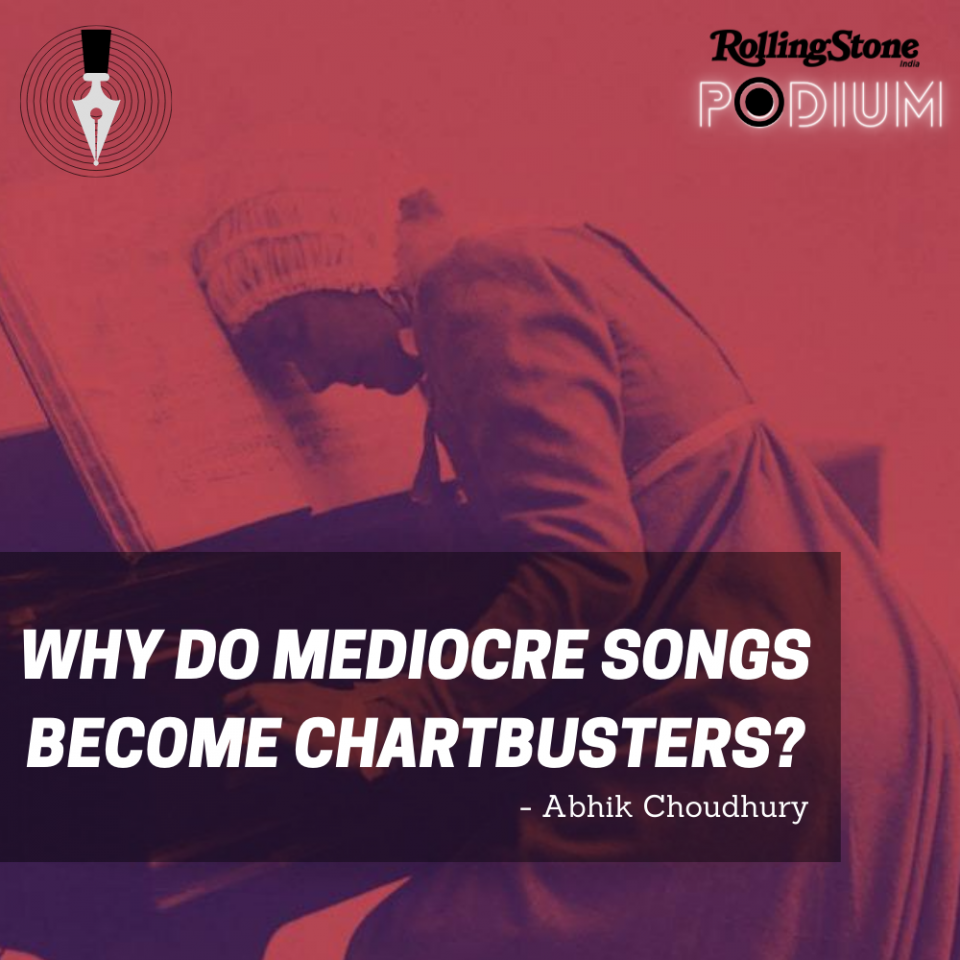Rolling Stone PODIUM: Why Do Mediocre Songs Become Chartbusters?
In this blog, marketing professional Abhik Choudhury questions the metrics of success on social media
(The views and opinions expressed in this blog belong solely to the aforementioned blog writer, and do not represent those of Rolling Stone India as a magazine)
Most of us would like to believe we have discerning taste in art. While art might be subjective, the evolution of it is often tracked through excellence and innovation that may not always cater to a populist culture. Van Gogh, Franz Kafka and Bach would attest.
It is hence quite saddening that one’s rare ability can be confused as elitism. Mannat Noor’s “Laung Laachi” is India’s most played YouTube song with over one billion views — there’s not an iota of problem with that but not knowing one good song of Pandit Bhimsen Joshi and M.S. Subbulakshmi, two Bharat Ratna awardees, is a true travesty. The same is true globally. Aretha Franklin, Al Green, Sam Cooke, Ella Fitzgerald or even Adele — the pitch perfect singer born in the digital era — can’t find themselves anywhere in the top twenty most played YouTube songs of all time.
There was always uninspiring music in every era but never before the digital boom such a consolidated effort was made to make such songs the benchmark of ultimate hits. Do we really decide the hits ourselves? Film production companies often strike deals with radio stations to declare their choice of songs as ‘dance anthem of the year’ or ‘romantic chartbuster’ from the day of release till they are neatly stuck in our heads. The frequency of such songs being played is easily 10x in comparison to the songs from other lesser-known production houses. And like any other art form, the popularity of a song depends on who is purchasing the maximum reach for the same
These days, most media spaces can be bought. A regular music listener might think, “India really does like this song, maybe I’m the only one not getting into the groove of ‘Tamma Tamma Again’.” Exclusive banner release of the single with a streaming platform? Done. A big celebrity making a small teaser on a short video app? Done. A million views in a day to trend globally? Done To earn those same million views sans paid campaigns, a genuinely good struggling musician might have to wait a very long time. Marketing is not an affordable thing for artists trying to make ends meet. The ubiquitous system is designed to elevate mediocrity and everyone does their part like a well-oiled machinery. Peer pressure and free Internet, plus an echo chamber of what we see and are shown more of makes it even trickier to find raw talent and make them famous.
In the 18th century, when Mozart was at his crest and Beethoven had emerged as a maestro, the world took notice of them because aristocrats and noble families sponsored their pure art and gave them lavish theaters to dazzle appreciative audiences. If it was in the hands of the public, neither might have survived good-looking tavern singers waltzing the audiences with wonderfully simple and hummable rendition of folk songs. When was the last time you heard a classical musician playing at a stage with the acoustic, lighting, art direction and spacing even half as well as any live show featuring a pop star? Of all the elitist and wrong things tied to the idea of the rich curating music, they always appreciated art for just the art of it and not the commerce. The deal with the devil now comes at a heavy price of letting go of the quality benchmarking.
Popularity in numbers is now revered and a criterion for greatness. The gharanas and the musical conservatories have started to crumble in the pressure to fill football stadiums and with the digital mob world calling art shots for the whole civilization, ours will be possibly the last century to relish both spectrums simultaneously.
One rationale though I often hear for the shelving of layered music from being hits is how this generation is a stressed-out bunch and just need foot-tapping numbers to chill and dance to at the end of the day. I don’t disagree with the need for music fillers for every human mood. Pop, the genre itself, stands on the dreams of one hit wonders and we need our healthy dose of “Sugar, Sugar” (The Archies) and “Dooba, Dooba” (Silk Route), just not at the cost of “Unforgettable” (Nat King Cole) and “Din Dhal Jaye” (Guide).
If every government put policies in place that disallows a couple of corporations to strategically control what the public hear more of and some Fortune 100 brands (the modern day royals) start to give the true maestros and ustads the best venues and platforms to allow the majestic art to be inherited simply for the art of it, wonders could happen. I was once asked, what is great music and who decides it? Have you seen those culinary shows where this passionate chef walks into a stranger’s quaint restaurant, takes the first bite and whispers with a sigh, ‘This is my childhood’? That’s exactly what the benchmark of a great song should be like — one that kindles intangible consciousness and fills you in, unsuspectingly, for decades to come. Go ahead, pick any song that has stood the test of time… Hindustani Raag Bhairavi, Vivaldi’s Four Seasons, Tagore’s Tumi Robe Nirobe, Queen’s Bohemian Rhapsody, Nusrat Khan’s Afreen Afreen or Lata Mangeshkar’s Lag Jaa Gale. Each absolutely different in structure & instrumentation, yet gifted with the same ethereal transcendental ability.
Abhik Choudhury is the chief strategist & founder at Salt and Paper Consulting. He is also a visiting faculty at the Indian Institute of Mass Communication, New Delhi. You can reach him at abhik@saltandpaper.co







